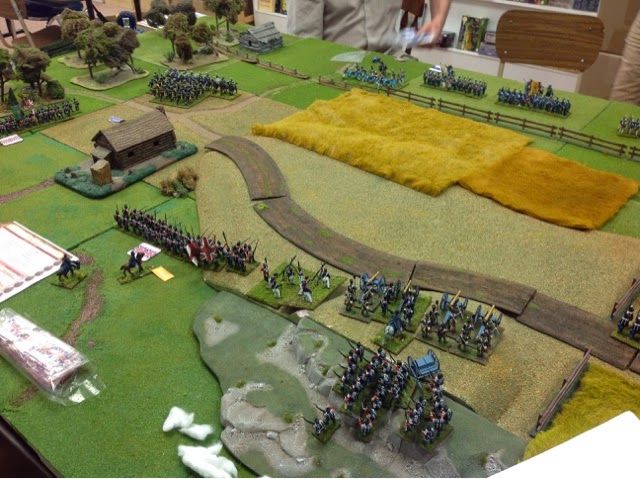British Cavalry
19th Light Dragoons
This is the only line unit of British cavalry to serve in Canada. Three squadrons arrived in 1813, and two more in 1814; elements fought at Black Rock, Chippawa, Lundy's Lane and Fort Erie. Two squadrons fought in the Plattsburgh campaign. The only charge they did was one squadron charged one company of infantry from Scott's brigade.
14th Light Dragoons
Took part in the New Orleans campaign. Fought dismounted because they had not yet procured mounts.
6th Inniskilling Dragoons
A detachment accompanied the British command in the invasion of the US. Perhaps 10 to 20 men.
British Artillery
Mainly in batteries of 3 guns. Equipped usually with 6 pounders, but 3 pounders were also used in the western frontier. They were often equipped with older cannons as well, including a battery of two 24 pounders. The artillery driver role (second from right) was usually filled by Canadian Provincial regulars (called car brigades).
Royal Horse Artillery Rocket Section
There was only one detachment of Royal Horse Artillery Rockets in North America. They only arrived in 1814, and only fought in the New Orleans Campaign. There were however 2 marine rocket battery detachments; Royal Marine Rockets fought at Lundy's Lane, Lacolle Mills, The Chesapeake Campaign and New Orleans (see uniform in the Royal Marine section below).
British Marines
Two regiments if marines were formed in the peninsular war, complete with colours. These were each accompanied by a battery of heavy artillery and a battery of rockets. It was the marine rocket batteries which fought in most of the battles that had rockets in them.
British Navy
Though the Americans had success in some small frigate actions, they spent the latter half of the war completely blockaded by the British fleet. The most significant naval actions were both won by the US navy, but on inland lakes; Put in Bay (Lake Erie), and Plattsburgh.



























































